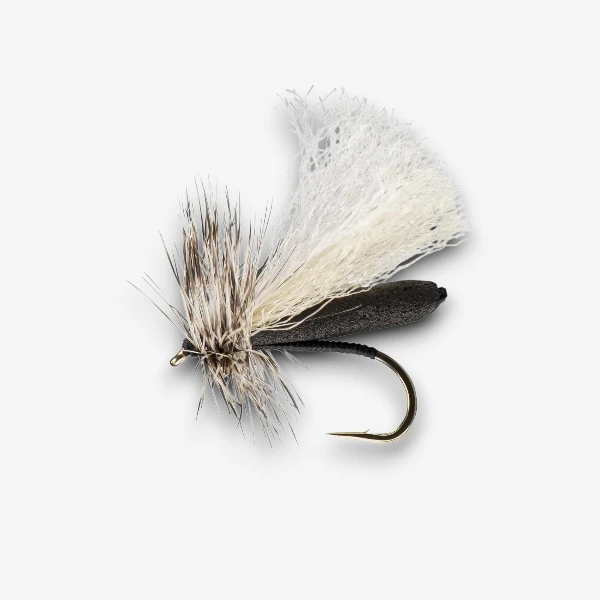Dark Blue Sedge
Description
Overview: The Dark Blue Sedge (Psilotreta labida) is a caddisfly species known for its striking dark blue to slate-colored body and its elusive nature, making it a challenging target for anglers. Its hatches, particularly in cold, clear rivers and streams, often create significant feeding opportunities for trout, though it is notorious for stumping even experienced anglers. The species is most common in fast-moving water and is typically active during late spring to early summer. Gary LaFontaine, a renowned fly fishing expert, was so perplexed by the nuances of fishing this caddis that he famously dubbed it the "Slap-in-the-Face Caddis" due to the frustrating and subtle behavior of the hatch. Its emergence is often fleeting, and trout can become selective during the hatch, making it an exciting yet demanding challenge for anglers. Common hook sizes for Dark Blue Sedge imitations typically range from 14 to 18.
Nymph Stage: The Dark Blue Sedge nymph is a slender, dark brown to olive insect, usually around 0.5 to 1 inch in length. The nymphs are found clinging to rocks and submerged vegetation in fast-moving water, where they spend most of their life before emerging. They are active crawlers, moving along the riverbed and making an important food source for fish, especially during their migration to shallower waters before emergence. Fly patterns tied on hooks size 14 to 18 effectively replicate their size and shape. Effective presentations often involve dead-drifting the nymph patterns near the bottom or near structure where these nymphs are most likely to be found.
Dry/Dun/Spinner: The adult Dark Blue Sedge, or dun, measures approximately 0.5 to 1 inch in length, with a dark blue to slate-colored body and translucent wings that may have a slight grayish tint. The most notable feature of this species is its rapid, subtle emergence, making it difficult for anglers to time and present a fly effectively. LaFontaine’s nickname, "Slap-in-the-Face Caddis," reflects the frustration many anglers experience when fish selectively feed on this caddis, often rising briefly and then disappearing. The adult caddisflies are usually seen fluttering along the water’s surface or perched on nearby vegetation, making dry fly patterns particularly effective. Hook sizes for dry flies range from 14 to 18.
Hatch Chart
Subscribe to view hatch locations. Hatch data is available for all species.


